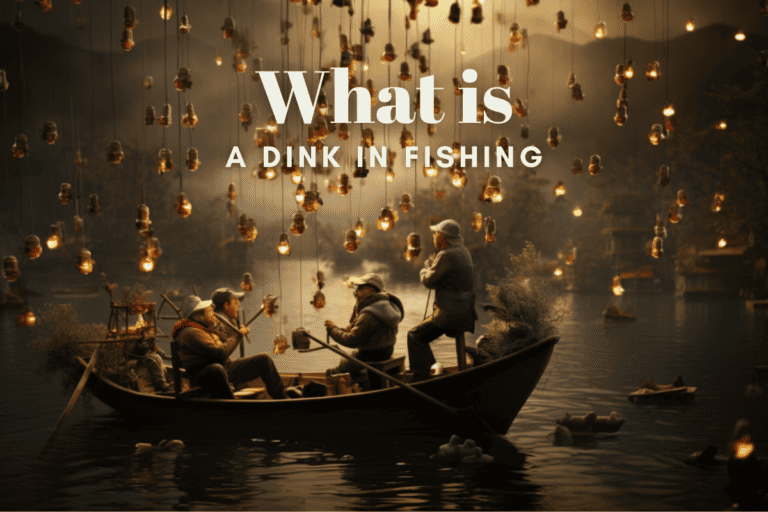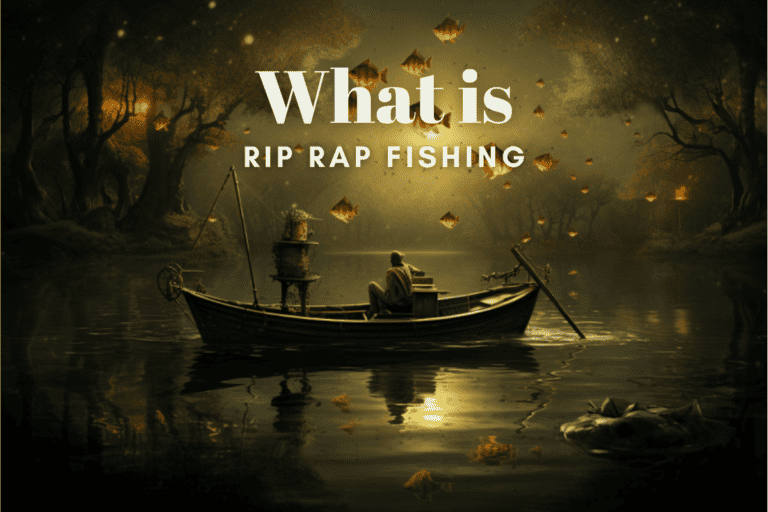What is a Green Stick in Tuna Fishing? Answers Here

Like a ballet on the high seas, green-stick tuna fishing is an art form. It’s a dance between angler and fish, demanding skill, patience, and the right equipment.
This article peels back the layers on this intricate technique. From understanding the tools of the trade to mastering the dance itself, it’s an invitation into a passionate community.
Dive in, and discover how you can join the ranks of the green-stick tuna fishing aficionados.
What is a Green Stick in Tuna Fishing? An Introduction to the Technique
Tuna fishing, a thrilling pursuit for many anglers, has seen various techniques evolve over the years. One such method that has garnered attention, especially among those targeting big bluefin, is green-stick fishing. Originating from Japan and gaining popularity in places like Hawaii and the Outer Banks, green-stick fishing offers a unique approach to catching tuna.
The Green Stick Defined:
The “green stick” in tuna fishing isn’t just a colorful term; it’s a literal description of the equipment used. Typically made from a combination of fiberglass and carbon-fiber, the green stick is a long, flexible pole designed to hold multiple lines. Its design allows it to bend without breaking, even when subjected to the powerful pull of a tuna.
How Does It Work?
The main principle behind green-stick fishing is to keep the lures or bait near the water’s surface, mimicking the movement of flying fish or squid, which are natural prey for tuna. The green stick is mounted on the boat, and multiple lines (often called “danglers”) are attached to it. These lines hold artificial lures or bait, such as squid lures, which are designed to jump and splash on the water’s surface, attracting tuna from below.
Key Features of Green-Stick Fishing:
- Birds: Often, a “bird” is attached near the lures. This device creates additional splashing, drawing more attention.
- Multiple Lures: The green stick allows anglers to troll multiple lures simultaneously, increasing the chances of a bite.
- Electric Reels: Given the potential for multiple catches, many fishermen use electric reels to help reel in the tuna efficiently.
- Visibility: The technique is visually engaging. Watching tuna chase and bite the lures near the surface can be an exhilarating experience, often captured in videos and shared on platforms like YouTube.
Origins and Popularity:
Green-stick fishing has its roots in Japanese commercial fishing. However, its effectiveness in catching tuna didn’t remain a secret for long. The technique traveled, gaining popularity in recreational fishing circles, especially in regions like Hawaii, known for its rich tuna grounds.
Green-stick fishing offers a blend of traditional angling knowledge and modern innovation. It’s a method that not only increases the chances of landing a prized tuna but also adds a visual thrill to the experience. As we delve deeper into the subsequent sections, we’ll explore how to prepare for a green-stick fishing adventure and master the technique for optimal success.
How to Prepare for a Green-Stick Fishing Adventure
Embarking on a green-stick fishing adventure requires a mix of preparation and understanding of the technique. Here’s a step-by-step guide to ensure you’re ready for the challenge:
- Research and Planning:
- Destination Selection: Opt for regions known for tuna presence, such as Hawaii or the Outer Banks.
- Seasonal Timing: Tuna have migratory patterns. Research the best seasons for tuna in your chosen destination.
- Gear Up:
- Selecting the Right Green Stick: Choose a durable green stick made of a hybrid of fiberglass and carbon-fiber.
- Reels: Electric reels can be beneficial, especially when multiple tuna bite simultaneously.
- Lures and Bait: Stock up on artificial squid lures and other baits designed to mimic tuna’s natural prey.
- Boat Setup:
- Mounting the Green Stick: Ensure the green stick is securely mounted on your boat, allowing for maximum flexibility.
- Line Arrangement: Set up multiple danglers from the green stick, ensuring they’re spaced out to cover a broad area.
- Safety First:
- Weather Check: Always check the weather forecast before heading out. Tuna fishing can be challenging in rough seas.
- Equipment Check: Ensure all gear, from the green stick to the reels, is in optimal condition.
- Learn from the Pros:
- Watch Tutorials: Platforms like YouTube offer numerous videos on green-stick fishing techniques.
- Hire a Guide: If it’s your first time, consider hiring a guide familiar with green-stick fishing.
Mastering the Technique of Green-Stick Tuna Fishing
While having the right equipment is crucial, mastering the technique of green-stick fishing is equally vital. Here’s how to refine your approach:
- Understanding Tuna Behavior:
- Tuna are attracted to surface disturbances, mimicking their prey. Ensure your lures create the right amount of splash and movement.
- Perfecting the Troll:
- Maintain a steady boat speed to ensure the lures jump and dive, attracting tuna.
- Adjust your speed based on the sea conditions and the lure’s performance.
- Line Management:
- Monitor the danglers for any signs of tangling. Multiple lines can sometimes cross, especially in windy conditions.
- Adjust the length and angle of the lines to cover different water columns.
- Setting the Hook:
- Once a tuna bites, set the hook firmly. Given the power of tuna, a secure hook set is crucial.
- Use the electric reel’s power judiciously, ensuring you don’t put too much pressure on the fish.
- Observation and Adaptation:
- Watch for signs of tuna presence, like birds diving or baitfish activity.
- If a particular lure or bait isn’t getting bites, don’t hesitate to switch it out.
- Continuous Learning:
- The ocean is ever-changing, and so are the fish. Stay updated with the latest techniques and tweaks in green-stick fishing.
- Engage with fellow anglers, share experiences, and learn from each other.
In essence, green-stick fishing is as much about the angler’s skill as it is about the equipment. With practice, observation, and continuous learning, you can master this exciting technique and land the prized tuna you’ve been dreaming of.
Final Thoughts

So, there you have it – green-stick tuna fishing is no child’s play. It’s a dance with the waves, a tango with the tuna, demanding both patience and precision.
But once you’ve tasted the thrill of the chase, it’s as addictive as a sailor’s tall tale. Remember, every journey starts with a single step, or in this case, a single cast.
So, dive in and let the adventure reel you in!
Frequently Asked Questions (FAQ)
Q: What is green stick fishing?
A: Green stick fishing is a tuna fishing technique that involves using a long fishing rod (green stick) to suspend multiple lures at the surface of the water and attract fish.
Q: How does green stick fishing work?
A: Green stick fishing works by simulating a school of baitfish swimming near the surface. The lures attached to the green stick create a visual spectacle that attracts tuna, leading them to strike the lures.
Q: What type of gear is used in green stick fishing?
A: The main gear used in green stick fishing includes a green stick (long fishing rod), lures, main line, leader, fishing pole, reel, and snap.
Q: How long is a typical green stick rod?
A: A typical green stick rod is usually around 18 feet in length. However, there are variations available in different lengths up to 30 feet depending on the fishing location and preferences.
Q: What is the purpose of green stick fishing?
A: The purpose of green stick fishing is to attract tuna fish by imitating a school of baitfish on the water’s surface. It is an effective technique for targeting tuna and can yield impressive catches.
Q: Is green stick fishing only used for tuna fishing?
A: While green stick fishing is primarily used for tuna fishing, it can also be effective for targeting other pelagic species like mahi-mahi and billfish.
Q: Where did the green stick fishing technique originate?
A: Green stick fishing originated in Japan and gained popularity in the 1980s. It has since spread to other parts of the world, including the East Coast of the United States.
Q: Can green stick fishing be used for recreational fishing?
A: Yes, green stick fishing can be used for recreational fishing. Many avid anglers enjoy the thrill and challenge of using this technique to target tuna and other game fish.
Q: What is the next lure drop in green stick fishing?
A: The next lure drop refers to the process of lowering the lures attached to the green stick into the water after a strike or when changing the lure configuration.
Q: Where can I learn more about green stick fishing?
A: You can learn more about green stick fishing, including tips, techniques, and gear, by visiting fishing gear shops, reading articles, watching videos, and following expert anglers on social media.





